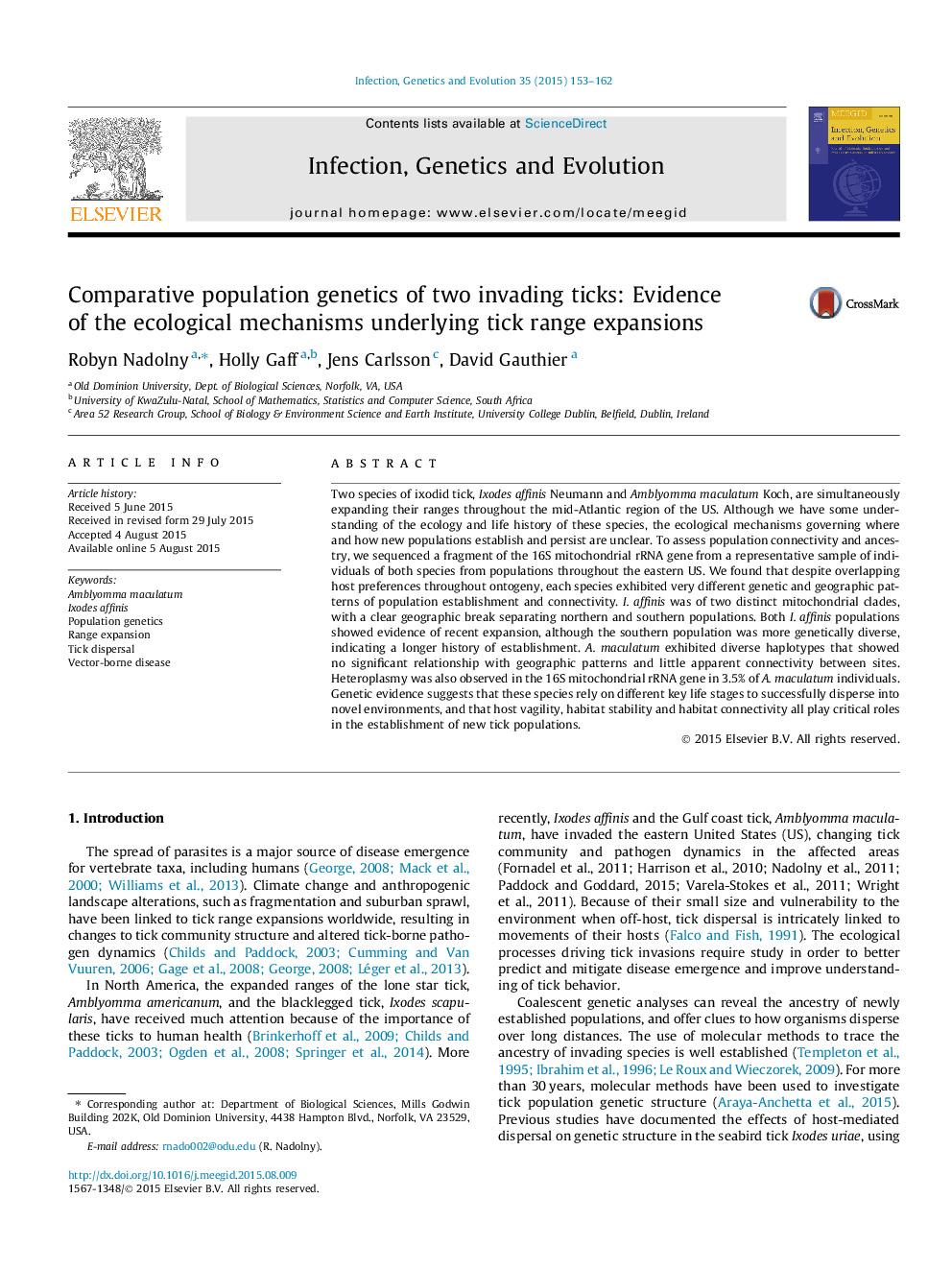| Article ID | Journal | Published Year | Pages | File Type |
|---|---|---|---|---|
| 5908445 | Infection, Genetics and Evolution | 2015 | 10 Pages |
Abstract
Two species of ixodid tick, Ixodes affinis Neumann and Amblyomma maculatum Koch, are simultaneously expanding their ranges throughout the mid-Atlantic region of the US. Although we have some understanding of the ecology and life history of these species, the ecological mechanisms governing where and how new populations establish and persist are unclear. To assess population connectivity and ancestry, we sequenced a fragment of the 16S mitochondrial rRNA gene from a representative sample of individuals of both species from populations throughout the eastern US. We found that despite overlapping host preferences throughout ontogeny, each species exhibited very different genetic and geographic patterns of population establishment and connectivity. I. affinis was of two distinct mitochondrial clades, with a clear geographic break separating northern and southern populations. Both I. affinis populations showed evidence of recent expansion, although the southern population was more genetically diverse, indicating a longer history of establishment. A. maculatum exhibited diverse haplotypes that showed no significant relationship with geographic patterns and little apparent connectivity between sites. Heteroplasmy was also observed in the 16S mitochondrial rRNA gene in 3.5% of A. maculatum individuals. Genetic evidence suggests that these species rely on different key life stages to successfully disperse into novel environments, and that host vagility, habitat stability and habitat connectivity all play critical roles in the establishment of new tick populations.
Related Topics
Life Sciences
Agricultural and Biological Sciences
Ecology, Evolution, Behavior and Systematics
Authors
Robyn Nadolny, Holly Gaff, Jens Carlsson, David Gauthier,
